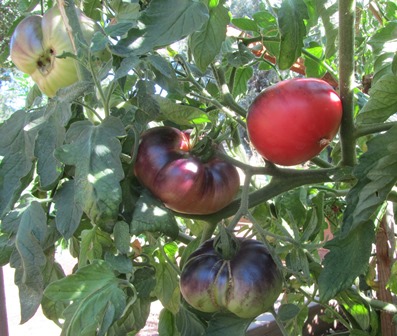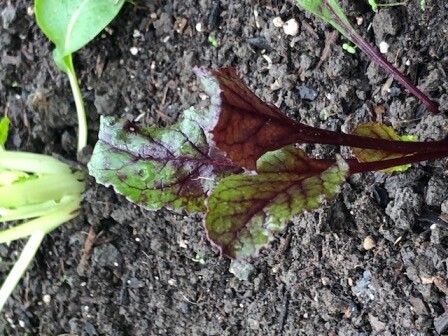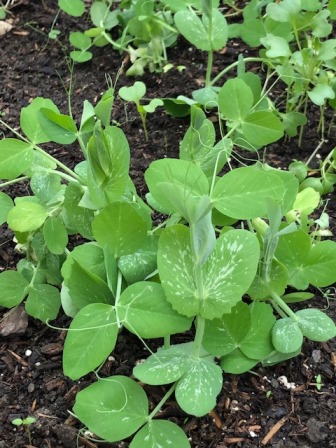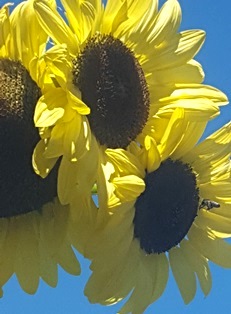Archive for May, 2022
Fruit Spreads Make Life a Little Sweeter
On the Henny Penny Farmette, we care for a small orchard of fruit trees. Each spring, summer, and fall, we harvest fruits to make sweet spreads. Whether spooned onto warm bread or waffles, scooped onto ice cream, or sandwiched between cookies, our homemade spreads offer a tasty reminder of the seasons of warmth.

There are lots of different types of spreads, including chutneys, compotes, conserves, fruit butters, jams, jellies, and preserves. Each type has special characteristics. The following lists outline some of the differences between these delicious spreads.

The Three C’s–Chutneys, Compotes, and Conserves
Chutneys are condiments that offer a variety of textures, from smooth to chunky, due to the type of fruit used as well as the blend of sugar, spices, and vinegar. The addition of chili peppers adds heat.
Compotes are often composed of fruit, either whole or in pieces, in a sugar-water syrup that includes spices.
Conserves are flavor- and texture-enhanced by adding to the jam such ingredients as dried fruit and nuts.

Preserves are spreads that include chunks of fruit cooked into the jam mixture. A marmalade is a type of preserve. We like marmalade made from citrus such as naval and blood oranges, lemons, and kumquats. You can make a lovely berry preserve by combining different types of berries with a sparkling juice, lemon zest, and sugar. Or, try cranberries and oranges for a tasty preserve for morning toast.
Fruit butters are spreads that have been cooked until all fruit has been incorporated in a buttery consistency. These blends of fruit and spice make them particularly sweet.
Jellies are made mainly from the juice of fruit cooked with sugar and pectin (to thicken). We make jelly from our late summer pomegranates, but your options are expansive when you consider all the types of fruits, flowers (yes flowers, like violet and lavender make wonderful jellies), and fruit juices that can be combined into a delicious jelly.
If you enjoy reading about gardening, preserving produce and fruits, and other country living topics, check out my Henny Penny Farmette series of cozy mysteries. The novels and my self-help, wellness, and spirituality books are available online and everywhere books are sold. See, https://www.amazon.com/Meera-Lester/e/B001JP835E%3Fref=dbs_a_mng_rwt_scns_share
Why I Choose to Plant Heirloom Seeds
Here in Northern California, gardeners are filling the local nurseries in search of seeds and seedlings to plant in their gardens. Many choose vegetables like tomatoes. The options are either hybrid and heirloom types.

Hybrid seed has been bred for higher yields and to be more disease resistant. Heirlooms are seeds that have been around for generations and are still popular because they perform well. Heirlooms have not been hybridized or genetically modified (non GMO).
Last year, I planted some heirloom yellow Brandywine cherry tomatoes. The pretty leaves looked more like potato than tomato leaves. The fruit was delicious and the plants were super productive.

The rains came before I got composting done on that bed. Winter arrived and then spring again. The seeds leftover from the previous summer garden sprouted and gave me hundreds of new yellow tomatoes for this year’s garden.
I love working with heirloom seeds. Because you can harvest seeds (or enjoy some plants that re-seed), you save money. You can collect seeds from you best specimens for a future garden. Hybrid seeds are often patented and more expensive. The seed company owns the right to those seeds.
Heirlooms are open pollinated and offer an incredible diversity in color and size of produce. These open-pollinated plants are often attractive to Earth’s pollinators like bees and butterflies. Pollinators boost production in the garden. Heirlooms are our great-great grandparents’ seeds and have stood the test of time for flavor, production reliability, and growth dependability. You have a choice. Why not try heirlooms this year?


If you enjoy reading about gardening and country life, check out my Henny Penny Farmette series of cozy mysteries, including A BEELINE TO MURDER, THE MURDER OF A QUEEN BEE, and A HIVE OF HOMICIDES. These cozy mystery novels and the more than two dozen health and wellness books I’ve written are available online and everywhere books are sold.
See, https://www.amazon.com/Meera-Lester/e/B001JP835E%3Fref=dbs_a_mng_rwt_scns_share
 Facebook
Facebook Goodreads
Goodreads LinkedIn
LinkedIn Meera Lester
Meera Lester Twitter
Twitter



